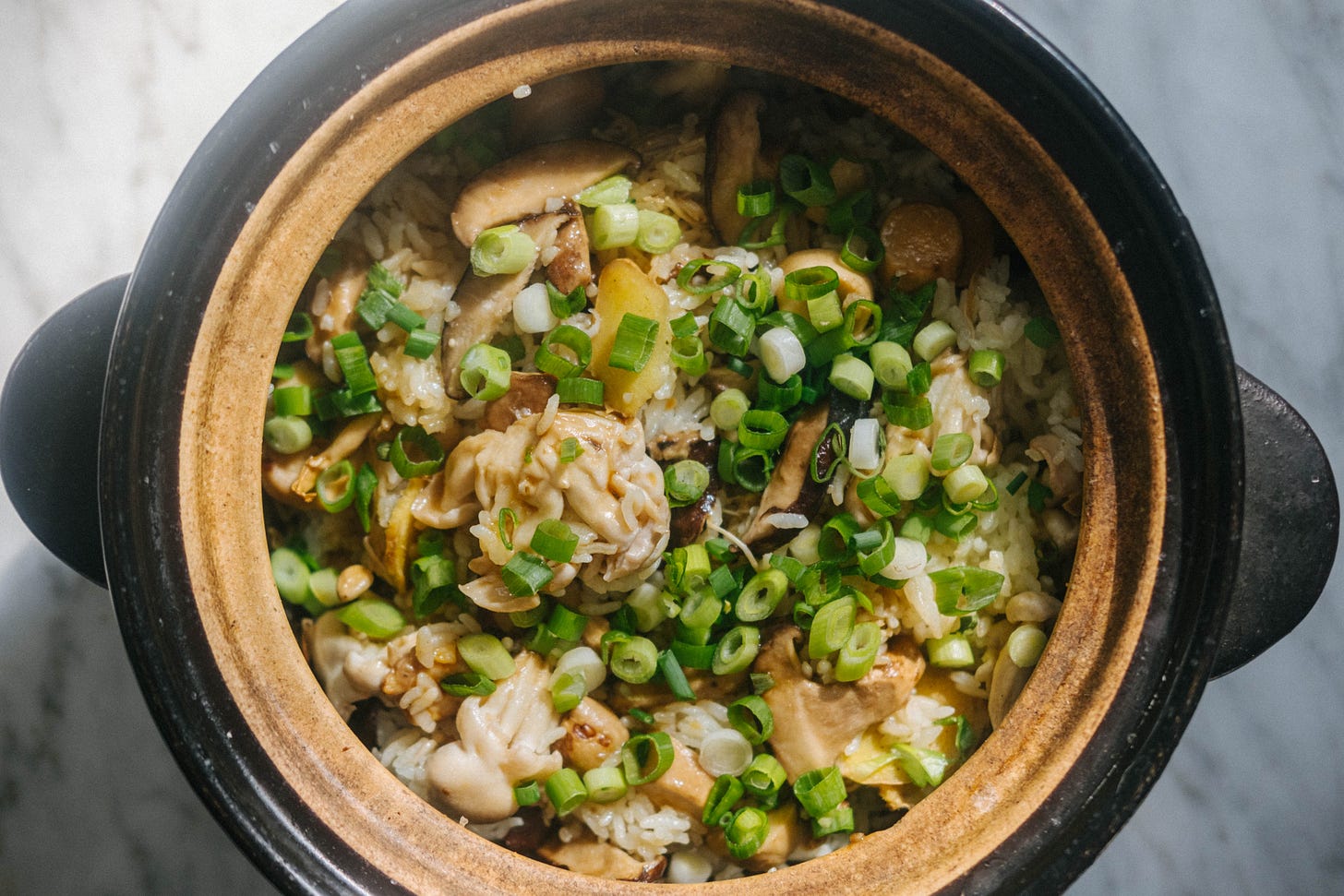Welcome to To Vegetables, With Love, a celebration of a vegetable life, less ordinary. Every week, I share a new recipe, along with links to recipes online and news. Free subscribers will receive one free original recipe every month. Paid subscribers get a free original recipe every week, plus access to all my recipe archives. If you would like to see your subscription options, click the link below. As always, I appreciate all of you being here! This week’s recipe is unlocked for ALL.
🥦 My new cookbook, Tenderheart offers 500+ pages of vegetarian and vegan recipes, with vegetables at the helm. It is also mostly vegan (or vegan-izable) and gluten-free. If you have been wanting to add more vegetables to your daily meals, but are looking for inventive flavours that are not boring or tired, pick up your copy here.
🙏🏼 And a reminder, if you love 💚 Tenderheart, leave it a review on Amazon (whether you purchased it there or not) which makes it easier for others to find my book. Thank you so much to everyone that has taken the time recently to leave a review - I’m grateful. Thank you!
In Chinese cuisine, rice is the constant. Often, it is an accompaniment, a side dish to a banquet of protein-and-vegetable-heavy mains. But to be honest, even then, the focus of the meal is still the rice. Afterall, sik faan, the Cantonese call for dinner, does translates to eat rice.
However, there is also an entirely other genre of rice dishes where it is a stand-alone meal. Fried rice is the obvious example of this, but there are many others. Gai fan, or chicken rice, is where marinated chicken is stirred through rice partway through the cooking process, imbuing the rice with its nectar as they cook together. There is also gai daan fan, where eggs are broken straight into the rice and stirred through, leaving strands of whites woven through the grains and turning them a muted golden hue (to be honest, I don’t know if this is an actual Canto dish or just something my mum makes). Lo mai fan is a Cantonese dish where savory seasonings like lap cheong (Chinese cured sausage) and lap yuk (cured pork belly), har mai (dried baby prawns/shrimp) and shiitake mushrooms are stirred through sticky rice (there is a vegan recipe for Sunday Night Sticky Rice in the Taro chapter of Tenderheart).
This week’s recipe is one I have wanted to create for some time. It is based upon my mother’s preparation of gai fan, but the chicken is replaced with robust mushrooms. Like the chicken in my mother’s recipe, the mushrooms are marinated soy sauce (or tamari), sesame oil and shaoxing wine which gives them a hit of umami. I add a bit of cornstarch - a common Chinese cooking method known as “velveting” - which allows the mushrooms to retain moisture on the inside, with a smooth texture on the outside. Velveting is a technique usually reserved for tenderizing meat, but I find it also helps vegetables stay silky when cooked a certain way (see my delicious Velvet Potato recipe in the Potato chapter of Tenderheart).
Today’s recipe is in the style of Cantonese clay pot rice also known as bo zai fan. Many Chinese families will own a simple earthenware clay pot to make dishes like this. Clay pots conduct and retain heat evenly, and allows for efficient distribution of moisture. While I don’t own a traditional Chinese clay pot, my Japanese donabe, also made of clay, offers the same cooking benefits. If you don’t have a clay pot or donabe, you could also use a small-ish Dutch oven. A thick bottom stainless steel pot may also work but you will have to play around with the cooking times. Of course, you could also use a rice cooker - again, you’ll have to tinker with the cooking times as the rice may cook faster and you won’t get the scorched bottom.
This week
Eat tofu for dinner. I was out three nights last week, and on two of those nights, I scoffed a plate of silken tofu just before I left. This recipe of course is my stalwart. Make the dressing in bulk and leave it in the fridge (it keeps for a week or more) for days when you only have the time and/or energy to open a pack of silken tofu. Here are two more cold silken tofu dishes - with mushrooms and ginger scallion oil and with a punchy mapo sauce. Another simple tofu recipe is this one - crispy tofu with broccoli and ginger garlic teriyaki sauce. Or let’s just go with tofu larb, because it always satisfies.
Just announced this week is the line-up for the Portland Book Festival on 4 November and I’ll be one of the non-fiction authors there. The full schedule details are coming soon and I’ll share a link to my individual event when available but festival passes are available now. I met some of the loveliest, food-smart, coffee-loving individuals in Portland when I was there for my book tour in June so I’m really excited to be returning.
New recipe
Clay pot mushroom rice
© Hetty Lui McKinnon for To Vegetables, With Love
Cantonese bo zai fan traditionally has a scorched layer of rice at the bottom, which the heavy clay pot facilitates quite easily. The thickness of the pot means the rice will sizzle and crisp up evenly without burning too quickly. For my recipe, crisping the bottom is optional but if you choose to do it, stay close, listen to the sound of the sizzle, smell the aroma and if you detect any burning scents, take it off the heat immediately. At first, the rice will seem stuck to the pot, but let it cool for a while and it will be easier to peel off. To me, the scorched rice is the most coveted part of this dish.
I make this with vegetable stock for more flavour but you could just use water and season accordingly with salt and soy sauce/tamari.
Serves 4
300g (1 1/2 cups) medium grain or jasmine rice
500ml (2 cups) vegetable stock (or water)
300g mixed mushrooms such as fresh shiitake, king oyster/trumpet, oyster, beech, enoki, Swiss brown/cremini etcetera
2 teaspoons cornflour/cornstarch
1 tablespoon (4 teaspoons) tamari or soy sauce, plus more for drizzling
1 tablespoon (4 teaspoons) sesame oil, plus more for drizzling
sea salt and white pepper
2 teaspoons shaoxing wine (omit for gluten free)
6 thin slices fresh ginger (about 10g)
2 scallions, finely sliced
Place the rice into a claypot or Dutch oven and rinse it 3 times until the water runs almost clear. Pour the stock over the rice and leave to soak for 10-20 minutes while you prepare the mushrooms.
For mushrooms with caps like shiitake, trumpets/king oyster or cremini/swiss browns, thinly slice them; if you have clusters such as enoki or beech, tear them into smaller bundles. Place them into a bowl and add the cornstarch/cornflour, tamari or soy sauce, sesame oil, 1/2 teaspoon sea salt, pinch of white pepper and shaoxing wine. Toss until well combined and coated.
Place the pot with the rice over medium high heat, add the ginger slices and bring to the boil. When bubbling, cover and reduce to lowest setting and cook for 10 minutes. Uncover, add the mushrooms and using chopsticks or a large spoon, stir the mushrooms through the rice. Drizzle with another 2-3 teaspoons of sesame oil and cover again and cook on lowest setting for 10 minutes.
Remove the lid, increase heat to medium high and cook for 4-5 minutes until you can hear it sizzling - this allows the bottom of the rice to become crispy. Turn off heat and drizzle with another 2 -3 teaspoons of soy sauce or tamari and top with scallions. You can skip this step if you don’t care for the crispy rice.
Eat as is, or top with chili crisp, sriracha, sesame seeds, crispy shallots or furikake.








This looks delicious and I can't wait to try it.
This rice dish sounds wonderful. I was gifted a tagine and have still not used it. Do you think it would work for this dish? Should I give it a go and be the guinea pig? Thank you.